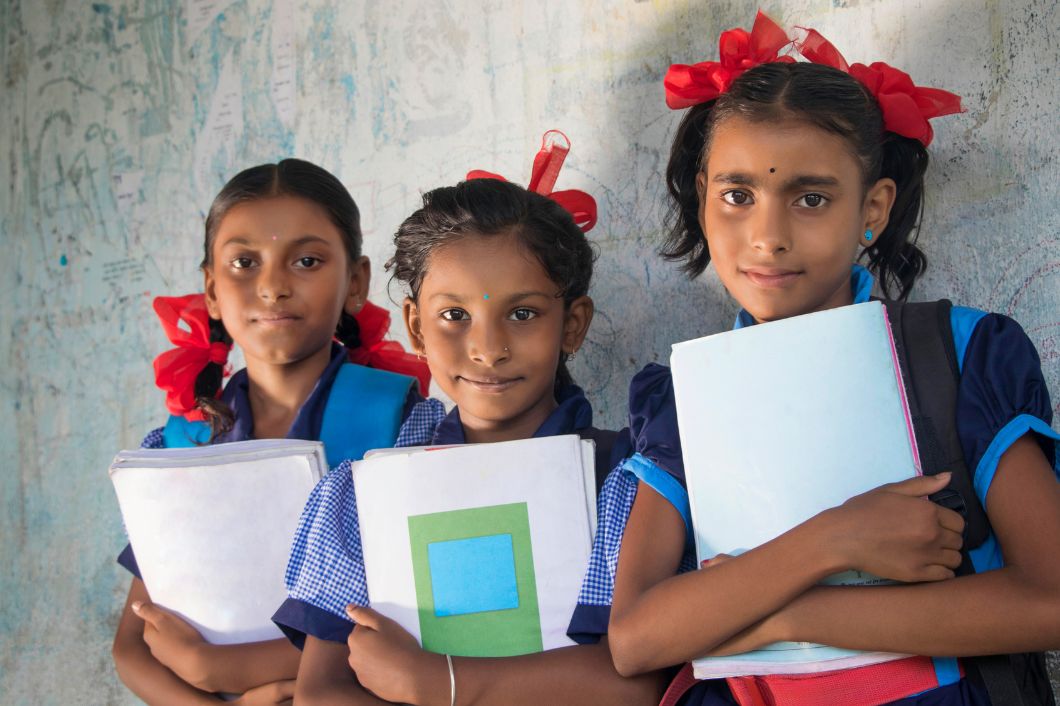The Power of the Girl Child: Unfolding India’s Vision through Government Schemes
In the grand tapestry of India’s growth story, there’s one thread that subtly yet powerfully interweaves itself into the very fabric of the nation – the girl child. Often underrepresented and undervalued, girls carry the potential to transform their lives and their communities. Yet, this potential often remains untapped due to barriers in education. That’s where India’s government schemes come in, serving as a beacon guiding towards a brighter future.

Let’s explore these schemes one by one, shedding light on their workings and benefits.
The Government Schemes for Girl Child Education in
India
Beti Bachao, Beti Padhao (BBBP) – Save the Girl Child, Educate the Girl Child
Launched in 2015, BBBP is a social campaign aiming to shift societal attitudes towards the girl child. It seeks to improve the efficiency of welfare services intended for girls in India, focusing on critical issues of female infanticide, sex-selective abortions, and lack of education for girls.
Sukanya Samriddhi Yojana (SSY) – The Prosperity of the Girl Child
This government-backed savings scheme is part of the BBBP initiative. Parents can open an SSY account in the name of a girl child and save money for her future educational and marriage expenses, thereby economically empowering girls.
Pragati Scholarship – Progress for the Girl Child
This scholarship scheme is specifically designed for girls who aspire to pursue technical education. It encourages girls to take the STEM route by providing financial assistance, thereby removing economic barriers in their educational journey.
National Scheme of Incentive to Girls for Secondary Education (NSIGSE)
Launched in 2008, NSIGSE aims to promote secondary education amongst girls and to reduce the dropout rate at this crucial stage. It provides a financial incentive to girls who pass their class 8 examination and enroll in class 9 in government, government-aided, and local body schools.
Kasturba Gandhi Balika Vidyalaya (KGBV) – Empowering Marginalized Girls
KGBV provides quality education for girls from disadvantaged communities. The scheme focuses on girls who are unable to access school facilities due to their remote locations, socio-economic conditions, or specific needs.
Mid-Day Meal Scheme – Combating Hunger and Promoting Education
While not exclusively for girls, this scheme plays a significant role in enhancing enrollment, retention, and attendance of girls in schools. By providing nutritious meals at school, it tackles the dual issues of malnutrition and lack of education.
Each of these schemes is a step towards a future where every girl child in India has the opportunity to learn, grow, and thrive. It’s through these policies that India is challenging gender stereotypes, combating discrimination, and embracing a vision of equality. It’s not just about educating the girl child, it’s about strengthening the future of the nation.
As we delve deeper into these schemes, we can see that empowering girls is more than just providing resources – it’s about creating an environment that values and nurtures their potential. These government schemes form the building blocks of this crucial endeavor.
This wraps up a broad overview of the government schemes for girl child education in India. As we continue our journey, I’m here to answer any questions or further elaborate on any scheme that you find intriguing. Remember, knowledge is power, and by understanding these schemes, we are better equipped to advocate for and support girl child education in India. Let’s keep learning, keep questioning, and keep empowering our girls.


